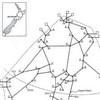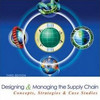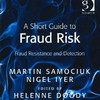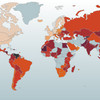 Christchurch, New Zealand, has been hit by an earthquake. Having spent some time living there myself, I can only imagine the damage to the buildings familiar to me, as I scour the news for the most recent photos and reports. Judging from the news images and videos of the Christchurch earthquake, the damage seems severe enough in places. How will the city recover? Will they be able to pull together the resources and quickly return to business as usual? I believe they will, because some years ago New Zealand started a project called “Resilient organisations“. Will it work? This is the ultimate test, perhaps sooner than they planned.
Christchurch, New Zealand, has been hit by an earthquake. Having spent some time living there myself, I can only imagine the damage to the buildings familiar to me, as I scour the news for the most recent photos and reports. Judging from the news images and videos of the Christchurch earthquake, the damage seems severe enough in places. How will the city recover? Will they be able to pull together the resources and quickly return to business as usual? I believe they will, because some years ago New Zealand started a project called “Resilient organisations“. Will it work? This is the ultimate test, perhaps sooner than they planned.
Resilient organisations
 I first heard about this project in 2004, when I was a visiting researcher at the University of Canterbury in Christchurch. The aim of the Resilient organisations project is to assist New Zealand organisations to recover economic competitiveness after hazard events by improving their resilience. More information on the project and reports for download can be found on the Resilient Organisations homepage, where they emphasize that
I first heard about this project in 2004, when I was a visiting researcher at the University of Canterbury in Christchurch. The aim of the Resilient organisations project is to assist New Zealand organisations to recover economic competitiveness after hazard events by improving their resilience. More information on the project and reports for download can be found on the Resilient Organisations homepage, where they emphasize that
There is an intrinsic relationship between organisational resilience and improving the resilience of communities. Enabling the continued operation of organisations, in and following crises, significantly impacts on the medium to long term recovery and health of the wider community. Increased resilience is also important when considering the interconnectedness of modern organisations, where disruptions can have significant and widespread impacts globally.
Resilience is viewed a 3-fold construct, working in a complex, dynamic and interconnected fashion depending on 1) keystone vulnerabilities, criticality and preparedness, 2) situation awareness, stemming from an assessment of the keystone vulnerabilities, and 3) adaptive capacity. Resilience, in essence, is the ability to survive disruptive changes despite severe impact. This post describes the interaction of the three elements that make up resilience.
New Zealand and economic resilience
Most important for recovery is economic resilience, described in my post on defining and measuring economic resilience as
the inherent and adaptive responses to hazards that enable individuals and communities to avoid some potential losses. It can take place at the level of the firm, household, market, or macroeconomy.
Economic resilience emphasizes ingenuity and resourcefulness applied during and after the event. Economic resilience has a behavioral emphasis. It focuses on the fact that individuals and organizations do not simply react passively and simply wait for (government) help and rescue in the face of a disaster. Is New Zealand prepared for this event? If they have put into practice what they learned from the Resilient organisations” project, I think they are.
New Zealand and transportation resilience
When disaster strikes, how does the transportation network recover? The transportation network is essential to many smaller and remoter communities, and as I learned in a session at the TRB 2009 conference, because
the restoration of the transportation network is also the key to the restoration of the economy and the society, not just the infrastructure.
This brings to mind an earlier post on the New Zealand Lifelines Engineering Project that defined lifeline engineering as
a collaborative inter-utility and cross-sector planning process to reduce the pre- and postemergency impacts of low probability disaster-scale events.
The project report shows how lifeline engineering is directly related to the resilience of road networks to natural hazards and how it can be integrated into road controlling authority management practices. The report is titled “Engineering lifelines and transport – should New Zealand be doing it better?” I hope they’ve spent the last two years actually doing it better.
Will it work?
Despite the havoc and the damage the Christchurch earthquake has caused, if I were there, I would be having a field day right now, eager to verify the conclusions of the Resilient organisations project, eager to see whether their recommendations were put into practice, and eager to find objects for my own research into supply chain resilience. Unfortunately, I can only watch from the sideline.
News links
- nzherald.co.nz: Christchurch earthquake
- starcanterbury.co.nz: Christchurch earthquake
Related
- husdal.com: Can Suply Chain Management learn from Emergency Management
- husdal.com: Resilience revisited












